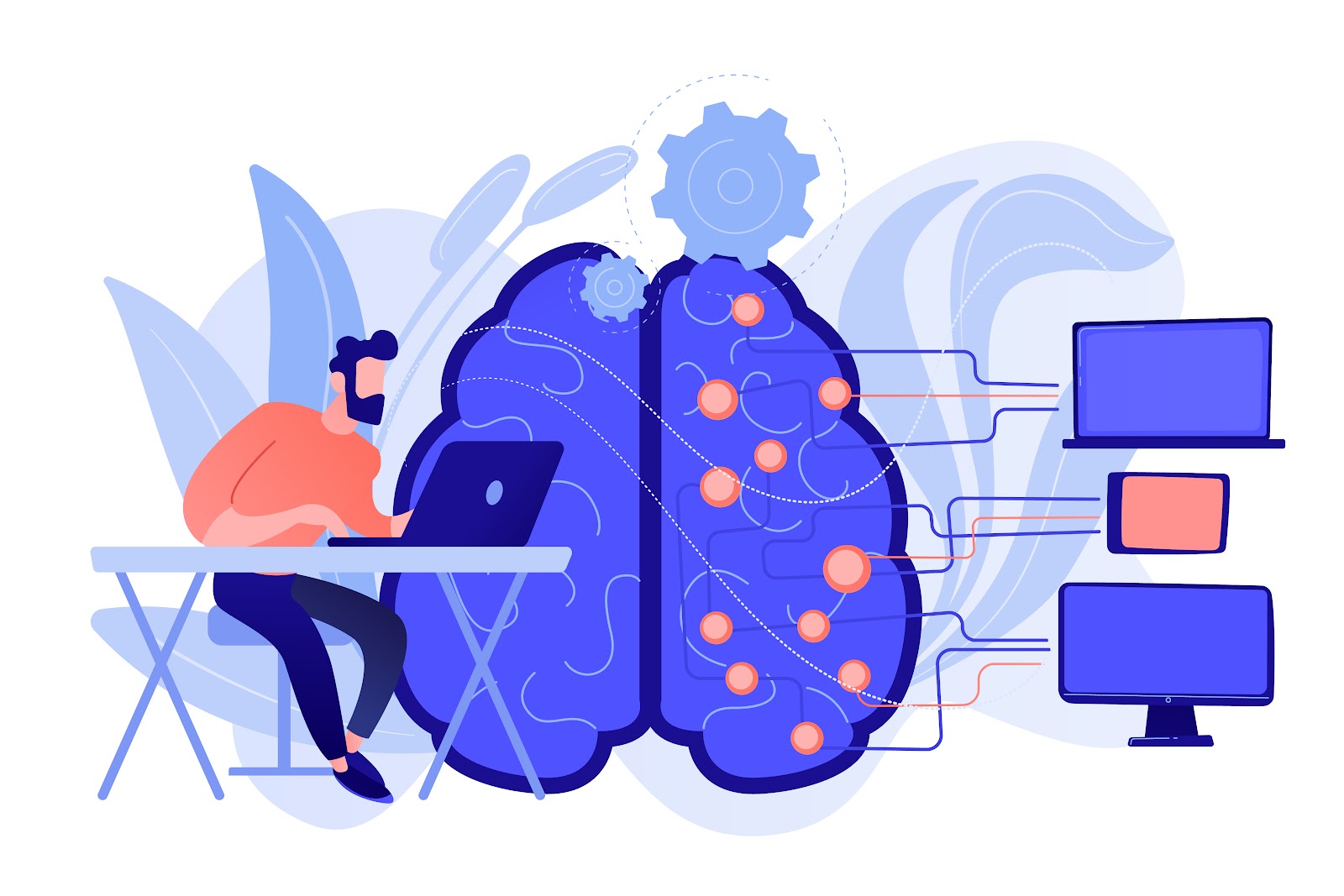Artificial Intelligence (AI) has revolutionized everything from healthcare to finance, with its ability to analyze vast amounts of data and make predictions or decisions. But as AI systems become more complex, they often function like “black boxes,” leaving users and even their developers uncertain about the reasons behind their outputs. This lack of transparency has raised questions about potential bias, discrimination, and ethical issues in AI applications. In response to these challenges, researchers and developers have been exploring the concept of Explainable AI (XAI) to shed light on the inner workings of AI models.
This article will delve into Explainable AI, exploring its importance, techniques, applications, and challenges.
Explainable AI: Understanding the Need for Complex AI models
The Rise of Complex AI Models

In recent years, AI models, particularly deep learning neural networks, have been utilizing advanced machine learning processes in order to progress towards transforming themselves into complex AI models. explainable AI enables them to achieve state-of-the-art performance in various tasks. However, as the number of layers and parameters in these models grows, they become harder to interpret. The lack of transparency in AI hinders their adoption and raises concerns about the reliability and safety of their outputs.
Explainable AI: Understanding The Black Box Problem
Traditional AI models, like decision trees or linear regression, were relatively interpretable, as their operations were explicit and easy to follow. In contrast, complex AI models paired with machine learning processes involve advanced data transformations through multiple layers, making it challenging to comprehend how specific inputs lead to particular outputs. The has reduced trust and adoption in critical applications like healthcare diagnostics or autonomous vehicles. This dilemma is termed as the black box problem of explainable AI.
Explainable AI: Ethical and Regulatory Considerations
The lack of transparency in explainable AI systems has sparked ethical debates, mainly when these systems are employed in domains with significant societal impacts, such as criminal justice or hiring processes. Additionally, regulators are now demanding more accountability from AI developers, pushing for explainability to ensure fair and unbiased decision-making.
Explainable AI: A mix of machine learning and complex AI models
Model-Specific Approaches
One way to achieve explainable AI is through model-specific approaches, where interpretability is built directly into the AI model architecture. For instance, rule-based complex AI model systems represent knowledge in explicit rules, making their decision-making process transparent and understandable. These complex AI models are particularly useful in domains where human experts provide domain knowledge.
Another model-specific approach is feature visualization, which aims to make the internal representations of AI models more understandable. Techniques like t-SNE (t-distributed Stochastic Neighbor Embedding) and activation maximization can help visualize high-dimensional feature spaces and generate meaningful representations of specific inputs.
Model-Agnostic Approaches
On the other hand, model-agnostic approaches provide interpretability for any complex AI model, regardless of its underlying architecture. These approaches act as a layer on the complex AI model and generate explanations without modification.
One popular model-agnostic technique is LIME (Local Interpretable Model-agnostic Explanations). LIME approximates the complex AI model’s decision boundary in a local neighborhood around a specific input, providing a simple and interpretable explanation for the model’s prediction. By fitting a simpler interpretable model to the local data, LIME can provide insight into why the complex AI model made a particular decision.
Another widely used technique is SHAP (Shapley Additive exPlanations), which draws upon cooperative game theory to allocate contributions to each feature in a prediction. SHAP values provide a unified and mathematically sound way to attribute the outcome of a complex AI model to its input features, offering global and local explanations.
Explainable AI: Benefits and Applications
Gaining User Trust and Acceptance
Explainable AI is vital in gaining user trust and acceptance, especially in high-stakes applications like medical diagnoses or financial decisions. Users who understand the complex AI model’s decision-making process are more likely to trust its outputs and adopt the technology.
Improving Decision-Making Processes
Explainable AI can enhance decision-making processes by providing human-readable explanations for complex AI model predictions. This is particularly valuable in fields where human experts need to verify the model’s decisions or when Clcomplex AI is employed as an assistant to human decision-makers.
Assisting in Debugging and Error Analysis
In complex AI models, debugging errors or identifying biases can be challenging. Explainable AI provides insights into how the model works, making it easier to identify and rectify issues in the system.
Applications in Healthcare, Finance, and Other Fields

Explainable AI has numerous applications across various domains. In healthcare, it can help doctors understand why a particular diagnosis was made, improving patient outcomes and enabling personalised treatment plans. In finance, it can assist in explaining credit-scoring decisions, ensuring fairness and compliance with regulations.
Challenges and Limitations of XAI
Trade-off Between Accuracy and Interpretability
Explainable AI techniques often simplify complex AI models to make them more interpretable. However, this can lead to a trade-off between model accuracy and interpretability. Highly interpretable models may sacrifice predictive power, while highly accurate models may be less interpretable.
Scalability Issues with Complex Models
As AI models become more sophisticated and more significant, explainability becomes more challenging. Techniques that work well with smaller models may struggle to provide meaningful explanations for massive neural networks.
The Subjective Nature of Explanations
Explanations generated by XAI techniques might not always align with human intuition, leading to potential user mistrust or scepticism. Striking the right balance between comprehensibility and accurate explanations is an ongoing challenge.
Ensuring Security and Avoiding Adversarial Attacks
The transparency of AI models can also make them vulnerable to adversarial attacks, where malicious actors exploit vulnerabilities in explanations to deceive the model or manipulate its behavior. This necessitates research on secure XAI methods.
Explainable AI: Real world Implementation of complex AI models
XAI in Autonomous Vehicles
Implementing explainable AI (XAI) in autonomous vehicles is crucial to ensure safety and trust among passengers and pedestrians. Explanations can help passengers understand why the vehicle made specific decisions, such as when to brake or change lanes.
XAI for Credit Scoring Systems
Explainable AI can help individuals understand the factors influencing their credit scores in the financial sector. This transparency promotes fairness and ensures hidden biases do not influence credit-scoring decisions.
XAI in Healthcare Diagnosis and Treatment
Explainable AI can help physicians comprehend AI-driven diagnoses and treatment recommendations in healthcare. It can also provide insights into AI models’ reasoning, facilitating the integration of AI into medical decision-making.
The Future of Explainable AI
Ongoing Research and Development
Researchers continue to work on refining existing explainable AI (XAI) techniques and developing new approaches to improve AI model interpretability. As complex AI models evolve, so too will the methods for achieving transparency.
Integration with complex AI Governance and Regulations
Explainable AI is expected to be crucial in AI governance and regulation. Policymakers and organisations are likely to incorporate XAI principles to ensure fairness, accountability, and ethical use of AI technologies.
Conclusion
Explainable AI (XAI) is vital to creating transparent and accountable AI systems. As AI continues to impact numerous aspects of our lives, understanding the decision-making process of complex AI models becomes increasingly important. Model-specific and model-agnostic approaches offer valuable tools to achieve interpretability, foster user trust, and enable complex AI adoption in critical domains. By addressing challenges such as the trade-off between accuracy and interpretability and ensuring security against adversarial attacks, we can pave the way for explainable AI to work in harmony with human intelligence, enhancing our lives while maintaining transparency and ethical standards. As research and developments in explainable AI (XAI) progress, we can look forward to more responsible and trustworthy explainable AI (XAI) implementations in the future.
Author bio: Hey there, I am Shashank, a technology enthusiast! I’m an admirer of Yaabot for reporting on the advancements in the tech space in the most in-depth manner possible, and it’s excellent to collaborate with them. Let me know in the comments your thoughts on this blog!
Frequently Asked Questions (FAQs)
1. What is the primary goal of Explainable AI?
Explainable AI aims to provide insights into complex AI models’ decision-making processes, making their outputs transparent and interpretable to users.
2. How does XAI differ from traditional AI models?
Traditional AI models, like decision trees, are inherently interpretable, whereas modern deep learning models paired with machine learning processes are often considered “black boxes” due to their complexity.
3. What are some popular techniques for achieving explainable AI?
Machine learning processes paired with model-specific approaches, such as rule-based systems and feature visualization, and model-agnostic approaches, like LIME and SHAP, are commonly used to achieve explainability.
4. Is there a trade-off between model accuracy and interpretability?
Yes, there is often a trade-off between model accuracy and interpretability. Techniques that enhance interpretability might reduce the model’s predictive performance.
5. How does Explainable AI impact data privacy and security?
Explainable AI utilizing complex machine learning processes can reveal sensitive information contained in the training data, leading to privacy concerns. Additionally, the transparency of complex AI models can make them susceptible to adversarial attacks.
6. What industries can benefit the most from XAI implementation?
Industries such as healthcare, finance, autonomous vehicles, and any domain with high-stakes decision-making can benefit significantly from the implementation of Explainable AI.


